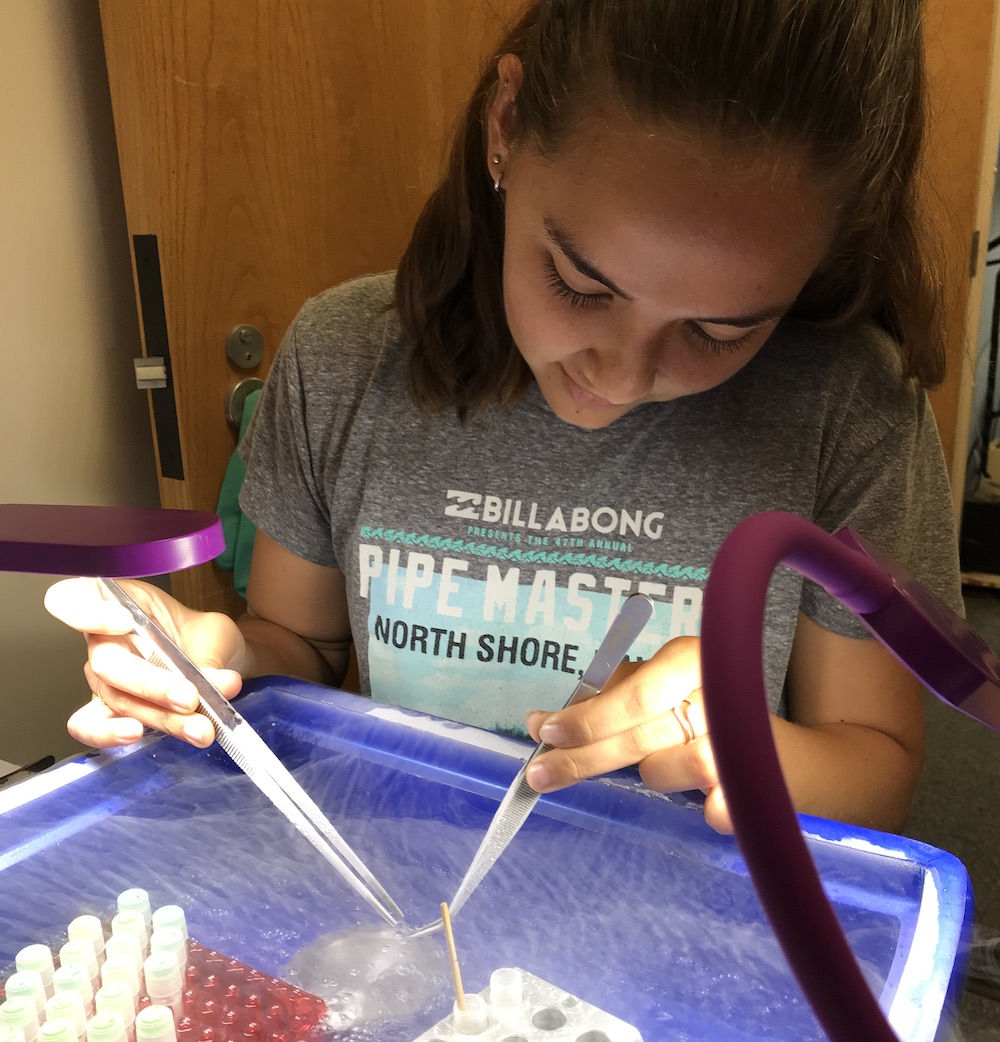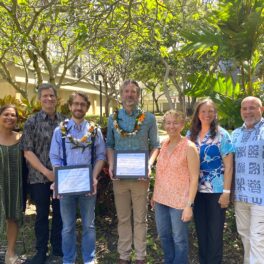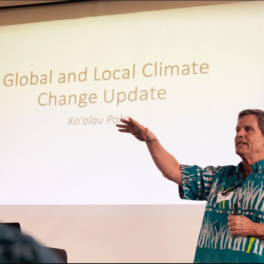Coral catastrophe prompts student’s dedication to marine conservation
 Mariko Quinn working in a coral ecology lab. Credit: Mike Henley.
Mariko Quinn working in a coral ecology lab. Credit: Mike Henley.
Witnessing a widespread coral bleaching event during the summer of 2015 sparked Mariko Quinn’s determination to conserve that which she loved. Growing up on the edge of the water of Kaneohe Bay, Oahu, Quinn spent many days exploring, swimming and snorkeling with family.
“Being in the water made me very passionate about the oceans and the health of the marine ecosystem from a very young age,” said Quinn, who is now a University of Hawai‘i (UH) at Mānoa undergraduate student in the Global Environmental Sciences (GES) degree program. “Seeing the coral bleaching event impact reefs both in Hawai‘i and around the world prompted me to do my eighth grade science fair project observing how coral recovered after the bleaching.”
At the state science fair, she connected with the Kulia Marine Science Club, an afterschool marine biology club for high school students at the Hawai‘i Institute of Marine Biology (HIMB) in the UH Mānoa School of Ocean and Earth Science and Technology (SOEST).
After her first year in the club, one of the instructors, Mike Henley became Quinn’s mentor to assist with her next science fair project on coral reef ecology. After a successful project, Quinn became an intern with Henley in the Smithsonian Institution’s Hagedorn Lab, based at HIMB.
“I have been consistently impressed with Mari’s dedication, performance, responsibility, motivation, and reliability as a student and young researcher,” said Henley, who is also a postdoctoral researcher in the Hagedorn Lab.
Quinn continued working with the lab group on several different projects spanning from 2017 to this past summer as a student in the GES program in SOEST. Earlier in 2021, Quinn co-authored a study published in Nature Scientific Reports revealing that blue coral’s secret sunscreen may provide resilience to changing ocean conditions.
“I’ve been able to explore not just coral reef ecology but also coral restoration and reproduction,” she said. “I’ve also learned a great deal about what goes into being a good researcher and how to design a successful large-scale experiment. One of the main things I’ve learned thus far is that failure is just part of the process. If an experiment doesn’t work the first, or fifth, time, it still moves the project and our scientific understanding forward.”
Drawn to the holistic and relatively broad course curriculum, she appreciated that the Global Environmental Sciences degree program covered a variety of topics with real-world applications, and that there is space for personalization and focus.
For her senior research thesis, Quinn plans to investigate the reproductive differences of the sea urchin, Tripneustes gratilla in locations around Oahu. This species of urchin is often known as an indicator species, as they are incredibly sensitive to changes in their environment, such as toxins or chemicals in the water.
“I also really enjoy how much support and community GES provides since it is one of the smaller programs on UH Mānoa campus,” Quinn said.
After graduation, she hopes to participate in the Knauss Fellowship Program in Washington, DC which allows students to connect policy and research in water-based ecosystems at a national level.
“In addition to the fellowship program, I hope to go to graduate school to pursue a doctoral degree in marine biology, likely with a project focused on coral reef ecology or conservation,” said Quinn. “Ultimately, I hope to be able to use my research in these fields to influence policy decisions that consider the future health of critical ecosystems.”
To learn more about Quinn’s research interests, watch a video from Blue Planet’s Empowered: Youth Climate Leadership.
Read also on UH News.



